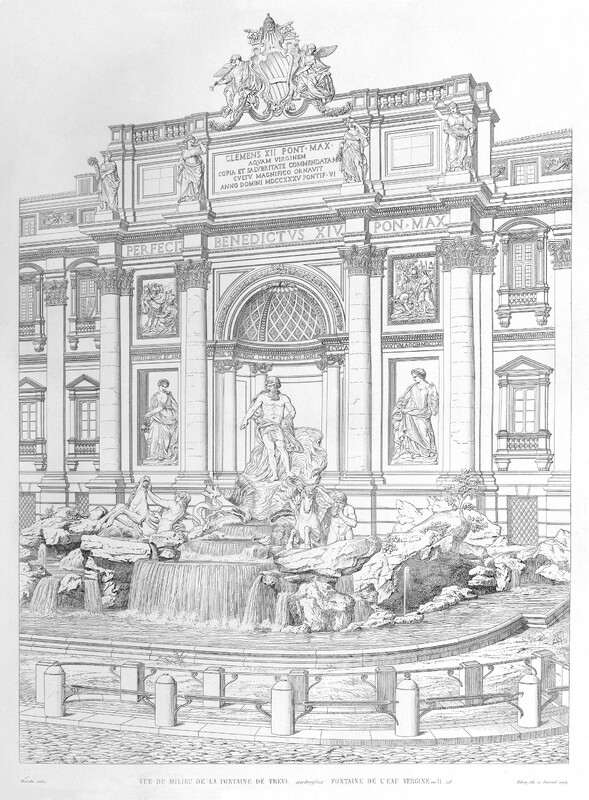Trevi Fountain
Item
- Title
- Alternative Title
- Creator
- Drafter
- City
- GPS
- Location
- Building Creation Date
- Century
- Description
- Techniques
- Classification
- Building Type
- Documentation Type
- Style/Period
- Cultural Context
- Subject
- Source
- Access Rights
- creator
-
Trevi Fountain
-
Fontana di Trevi
-
Nicola Salvi (Italian architect, 1697-1751)
-
Hibon, Auguste (French engraver and etcher, 1780-1857) and Durond
-
Rome, Lazio, Italy
-
54.384042
-
Italy
-
1732-1762 (creation)
-
18th century
-
front view of the fountain, exterior perspectives
-
Its construction was extremely protracted, but as early as 1735 the architectural framework was complete, and by Salvi's death the ornamental rock formations and full-scale models of most of the sculpture were in place. The fountain is the most monumental water display in Rome and represents the culmination of a tradition of combining water and sculpture within an elaborate architectural setting. Salvi treated an existing façade of the Palazzo Poli as a nine-bay unit with the central three bays articulated with attached Corinthian columns suggesting an antique triumphal arch. The central bay is treated as a giant niche, which frames Maini's free-standing figure of Oceanus, from which the sculptural scheme and the waters of the fountain seem to flow into a large rock basin. An attic storey above the central niche is surmounted by a coat of arms of Clement XII and incorporates statues representing the Four Seasons, part of a complex iconographic scheme emphasizing the important role of water in nature.
-
line drawings (drawings)
-
Architectural Documentation
-
illustrations
-
Baroque
-
Italian
-
allegorical
-
architectural exteriors
-
mythology (Classical)
-
Architecture, Baroque
-
Fountains
-
Oceanus (Greek deity)
-
capital: Corinthian
-
pilaster: compound
-
Letarouilly, Paul Marie. Edifices de Rome Moderne. Paris: A. Morel, 1868, 348.
-
Public Domain
-
Salvi, Nicola
- Item sets
- Architecture Illustrations
Nicola Salvi (Italian architect, 1697-1751), “Trevi Fountain”, Arch Design Images, accessed December 22, 2025, https://exhibits.lib.ttu.edu/s/archlib/item/19039


